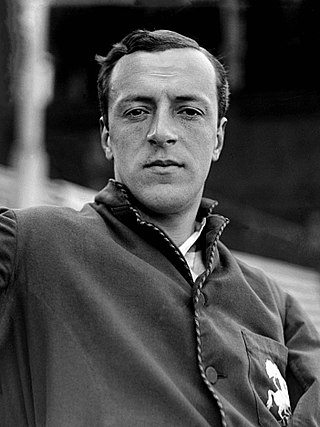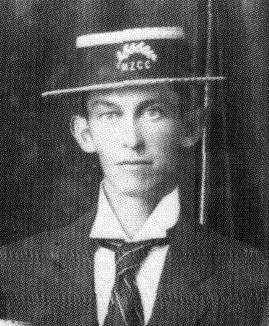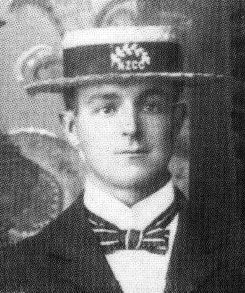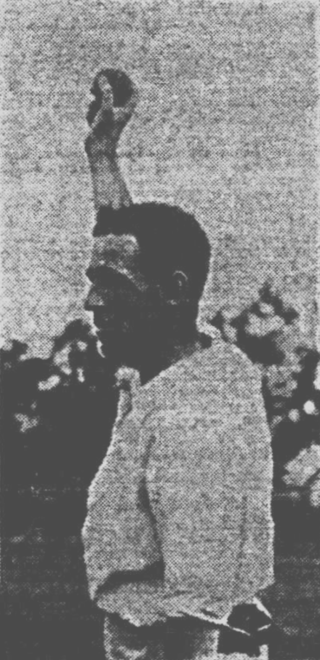
Kenneth John Wadsworth was a New Zealand cricketer who played 33 Tests and 13 One Day Internationals for New Zealand as a wicket-keeper. Wadsworth also played for Nelson in the Hawke Cup.

The Fiji national cricket team is the men's team that represents Fiji in international cricket. Fiji has been an associate member of the International Cricket Council (ICC) since 1965, although the team's history goes back to the late 19th century.

The Philadelphian cricket team was a team that represented Philadelphia, Pennsylvania, in first-class cricket between 1878 and 1913. Even with the United States having played the first ever international cricket match against Canada in 1844, the sport began a slow decline in the U.S. This decline was furthered by the rise in popularity of baseball. In Philadelphia, however, the sport remained very popular and from the end of the 19th century until the outbreak of World War I, the city produced a first class team that rivaled many others in the world. The team was composed of players from the four chief cricket clubs in Philadelphia–Germantown, Merion, Belmont, and Philadelphia. Players from smaller clubs, such as Tioga and Moorestown Cricket Club, and local colleges, such as Haverford and Penn, also played for the Philadelphians. Over its 35 years, the team played in 88 first-class cricket matches. Of those, 29 were won, 45 were lost, 13 were drawn and one game was abandoned before completion.

An English cricket team led by Lord Hawke toured Ceylon and India in the Indian season of 1892–93. It was the second visit by an English team to India, after G. F. Vernon's XI in 1889–90, and the third to Ceylon.
After a gap of five years the fourth team of English cricketers toured the West Indies in the 1901-02 season. The team was organized by H. D. G. Leveson Gower, who was unable to tour, and captained by Mr. R. A. Bennett. Like earlier touring parties it consisted solely of amateurs. They played a total of 19 matches, of which 13 are regarded as first-class, between January and April 1902.

Michael John Froud Shrimpton was a New Zealand cricketer and coach.
This article describes the history of Australian cricket from the 1900–01 season until 1918.
This article describes the history of New Zealand cricket from the 1890–91 season until 1918.
The Australia national cricket team toured New Zealand from February to April 1914 and played eight first-class matches including two against the New Zealand national team. New Zealand at this time had not been elevated to Test status. The tour was organized and captained by Arthur Sims, who had previously represented New Zealand. The tour is notable for the fact that it featured Victor Trumper's final appearance in a first-class match before his death at age 37 in 1915.

Bernard James Tindal Bosanquet was an English cricketer best known for inventing the googly, a delivery designed to deceive the batsman. When bowled, it appears to be a leg break, but after pitching the ball turns in the opposite direction to that which is expected, behaving as an off break instead. Bosanquet, who played first-class cricket for Middlesex between 1898 and 1919, appeared in seven Test matches for England as an all-rounder. He was chosen as a Wisden Cricketer of the Year in 1905.

Matthew James Henry is a New Zealand professional cricketer who plays for Canterbury, and for the New Zealand national team. He is a right-arm fast-medium bowler. Henry was a member of the New Zealand team that won the 2019–2021 ICC World Test Championship. He was also a part of the New Zealand squad to finish as runners-up at the 2015 Cricket World Cup.

Arthur Dunbar Whatman was an English cricketer of the early twentieth century who played as a wicketkeeper for Suffolk County Cricket Club, a non-first-class team that is one of the minor counties of English cricket.

Hugh Butler Lusk was a New Zealand cricketer and lawyer.

Frank Stanley Frankish was a cricketer who played first-class cricket for Canterbury from 1894 to 1903, and played for New Zealand in the days before New Zealand played Test cricket.

Charles Boxshall was an Australian-born New Zealand wicket-keeper who played first-class cricket from 1898 to 1915, and played 12 times for New Zealand in the days before New Zealand played Test cricket.

Henry George Siedeberg was a New Zealand cricketer who represented the national side and was several times the national billiards champion.
Arthur Hector Gore was a New Zealand cricketer who played first-class cricket from 1886 to 1902.

Jeremiah John Mahoney, sometimes spelt Mahony, was an Australian-born cricketer who played four times for New Zealand in the days before New Zealand played Test cricket.

Harry Hay was an Australian cricketer who played first-class cricket for South Australia in 1903 and 1904.
Richard William Dalgleish was a New Zealand cricketer who played two matches of first-class cricket for Hawke's Bay in 1907 and 1908.
















